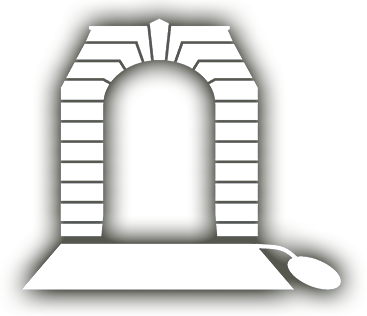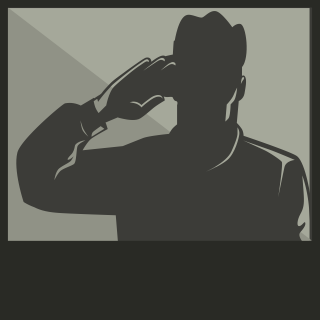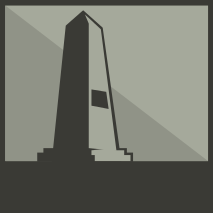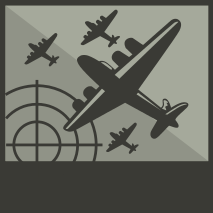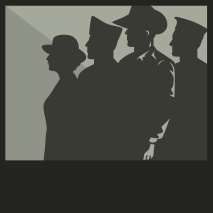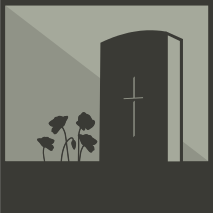Resources
Filter
Media
Type
Conflict
Campaign
Use quotes for more accurate searches - e.g., "2/10th infantry battalion"
Showing 50 of 4088 results
-
-
https://aso.gov.au/titles/newsreels/road-to-kokoda/clip1/
-
https://anzacportal.dva.gov.au/wars-and-missions/vietnam-war-1962-1975/events/combat/battle-of-coral-balmoral
-
-
-
In 1965 Smith, then a major, was serving with 6RAR which had been raised for service in South Vietnam. The following year, he assumed command of Delta Company. The Company was warned to be ready for Vietnam by May 1966. Smith, whose experience of jungle warfare in Malaya was to prove of great value, put his men through the most rigorous training involving weapon handling, patrolling, tracking, navigation, map reading, bayonet fighting and mine drills. By the end of the course, they were jogging five miles a day over rough ground in boots and carrying heavy packs. In early June, they boarded a Boeing 707 at Brisbane and headed for Vung Tau, South Vietnam, via Manila and Saigon. 6RAR, an infantry battalion, commanded by Lt Col Colin Townsend, was part of 1st Australian Task Force (1ATF). A week later, they were called forward to the ATF base at Nui Dat, Phuoc Tuy Province. In the early hours of August 17, the base came under heavy shelling and mortaring. The artillery responded with a counter bombardment on suspected Viet Cong (VC) positions. Bravo Company 6RAR was deployed at first light. They located the enemy’s firing points but, finding no evidence of preparations for a major attack, most of the company returned to base, leaving only one platoon near the Long Tan rubber plantation. During the previous days, higher command had received several indications that the VC might be preparing for a big attack on the base at Nui Dat but these were not passed on to 6RAR’s company commanders. Delta Company moved out on August 18. Their orders were simply to relieve B Company’s platoon and take over the search for the enemy units responsible for the shelling. Moving through low scrub, swamps and paddy fields, at about 1300 hours they arrived in the area with a force of 105 men and a small party of New Zealand Artillery Forward Observers. Smith’s men found mortar pits, stained clothing and abandoned equipment, evidence that the counter-battery fire had caused casualties and a rapid withdrawal. Then, 11 Platoon ran into the forward troops of a large force, later estimated at 2,500 Viet Cong and North Vietnamese Army troops. The platoon was pinned down by intense machine gun fire, their platoon commander, 2nd Lieutenant Gordon Sharp, was killed, and they were soon taking heavy losses. At 1600, the rain fell in torrents, turning the ground to red mud. It was impossible to dig in, trenches filled with water and an electrical storm added to the bedlam of noise, causing problems with communications. Smith formed a defensive perimeter on a reverse slope and made repeated attempts to relieve 11 Platoon while driving off numerous attacks from both flanks on his own position. The sheer weight of assaults from VC 275th Regiment supported by the local D445 Battalion meant Delta Company was in danger of being encircled and overrun. The weakened 11 Platoon, now under the command of Sergeant Buick and supported by the Direct Support Battery of the Royal New Zealand Artillery, had a desperate struggle to beat off one attack after another. Smith called down a regimental fire mission of all 24 guns. The combined fire from Delta Company and the supporting batteries were devastating. He said afterwards that the VC advanced into withering fire in wave after wave like zombies, urged on by the sinister blaring of bugles signalling orders to assemble and then attack. “Tracer filled the gathering darkness,” he said later. “It was like a million fireflies coming at us. We took cover behind the rubber trees while bullets ripped through the branches and white latex ran down the bark.” He called for an airstrike with rockets, bombs and napalm across the front of 11 Platoon but US Air Force Phantom fighter jets could not identify Delta Company because of heavy rain, cloud and smoke from gunfire. Sergeant Buick directed close artillery fire to give 11 Platoon’s survivors, many of whom were wounded, a chance to break out. Company Sergeant Major Jack Kirby, a big man, moved about in the open handing out ammunition and friendly advice, “If you don’t know him, son,” he would say, “shoot him.” He carried two wounded men to an aid post under fire and then went forward and killed the crew of a heavy enemy machine gun that was being set up on the edge of the perimeter. At 1800, two RAAF Iroquois helicopters arrived in atrocious weather and, with the help of coloured smoke grenades, “dropped ammunition,” Smith said, “right into our lap.” The arrival of Armoured Personnel Carriers equipped with machine guns turned the tide of the battle. Their additional mobility and firepower broke the Viet Cong’s will to fight. By 1915 hours it was dark and the enemy finally disengaged and withdrew, leaving behind more than 200 dead. Seventeen Australian soldiers were killed and 23 wounded; later one more died of his wounds. Delta Company returned to Nui Dat late on August 21.
-
https://www.youtube.com/watch?v=8gUSq7pxux4
-
-
http://www.silentsoldiersofnaours.com/
-
-
https://recordsearch.naa.gov.au/SearchNRetrieve/Interface/ViewImage.aspx?B=7377842
-
https://www.bbc.com/news/uk-england-27324286
-
Oscar Baumann's medals: 194/15 Star British War Medal Victory Medal
-
German POWs captured by Allied Forces in 1942 at El Alamein. AWM 044985.
-
-
-
The crew did, in fact, bomb on 12 occasions using G-H, 9 of which was as a G-H Leader. The first being February 18th 1945, against Wesel. The clues are in the bomb loads and ORB terminology. Also, in the No.3 Group Bombing Operations Records Book. On a few occasions in his Log Book, Jeff inserts 'Marker' of 'Smoke Puffs' in the comments section. G-H Leader crews only carried these. 'Markers' are Target Indicators, or TI's. 'Smoke Puffs' are Sky Markers ( came in three colours as standard, Red, Blue and Green ). So using the Squadron ORB, the No.3 Group Bombing Records Book and Jeff's Log Book, we can record all the G-H operations with some certainty. February 18th 1945 : Wesel : 1 x Marker ( Jeffs Log Book) February 19th 1945 : Wesel : All aircraft 186 sent was GH equipped. February 25th 1945 : Kamen : 1 x Marker ( Jeffs Log Book) February 27th 1945 : Gelsenkirchen : 'Bombed on Radar Navigation Aid' (ORB) March 2nd 1945 : Cologne : Abandoned Trouble with the Radar Navigation aid' (ORB) March 5th 1945 : Gelsenkirchen : 'Bombed on Radar Navigation Aid' (ORB) March 6th 1945 : Wesel: 'Bombed on Radar Navigational Aid' (ORB) March 9th 1945 : Datteln : Bomb Load included 1 x 250lb Blue Skymarker. (ORB) March 18th 1945: Hattingen : 1 Smoke Puff (Jeff's Log Book) Bomb load included 1 x 250lb Skymarker Red ( ORB). March 21st 1945: Munster : 1 Smoke Puff (Jeff's Log Book). Bomb load included 1 x 250lb Skymarker Blue ( ORB). March 23rd 1945 : Wesel : 'Bombed on Radar Navigational Aid' (ORB) March 27th 1945 : Hamm : 1 Smoke Puff (Jeff's Log Book) Bomb load included 1 x 250lb Skymarker Green ( ORB).
-
-
-
-
-
-
-
-
-
https://www.abc.net.au/news/2020-02-18/arnold-forrester-kokoda-veteran-dies-aged-100/11974770
-
-
-
-
-
-
-
-
59_JOHN-DRURY-Help-from-Afar-The-Adoption-of-Dernancourt-by-Adelaide-after-World-War-I.pdf
-
-
-
-
-
-
-
-
-
-
-
-
-
-
-
https://recordsearch.naa.gov.au/SearchNRetrieve/Interface/ViewImage.aspx?B=1055457
-
https://nominal-rolls.dva.gov.au/veteran?id=663702&c=WW2#R
Page 1 of 82
This page is supported by a grant from the ANZAC Day Commemoration Council

